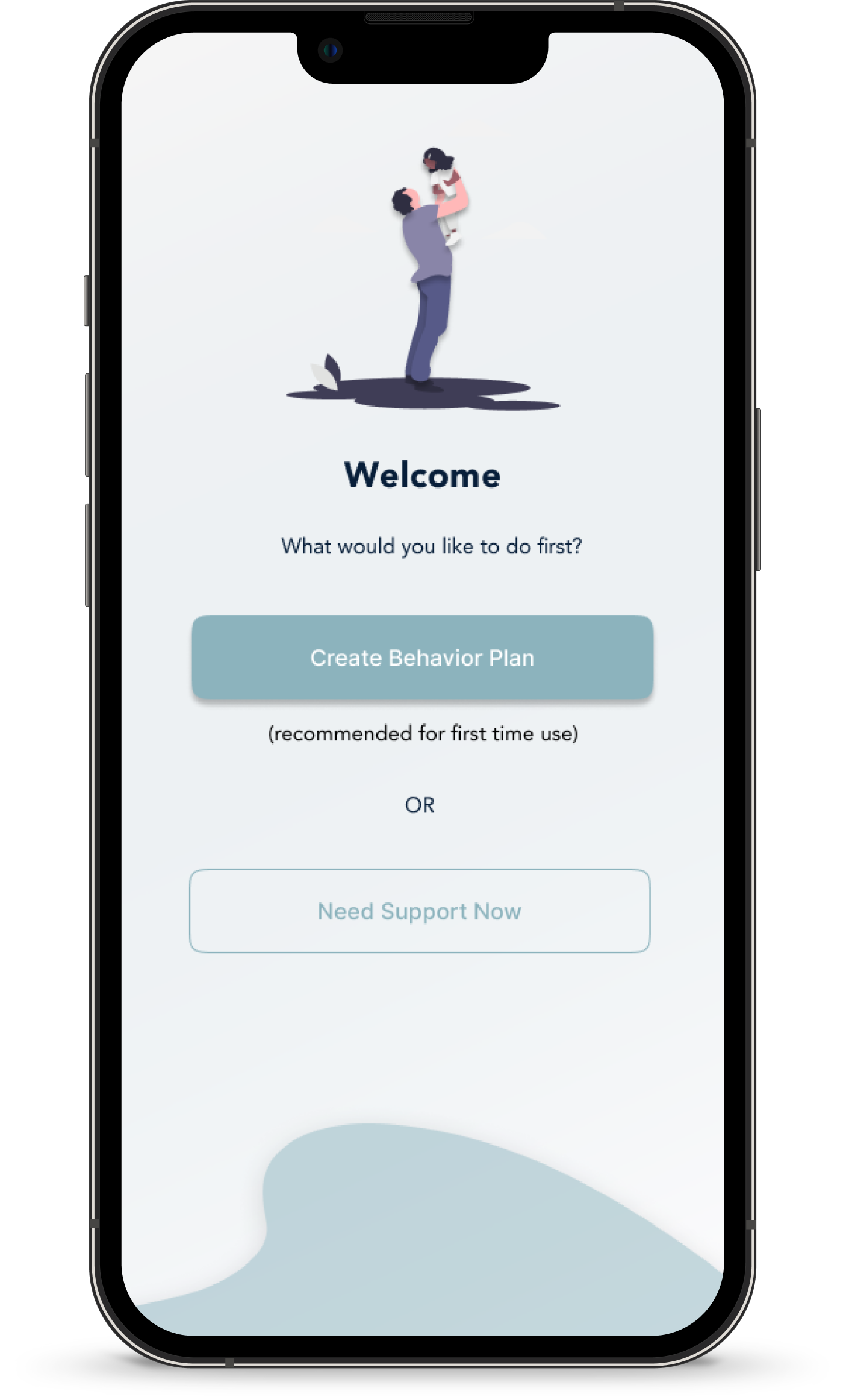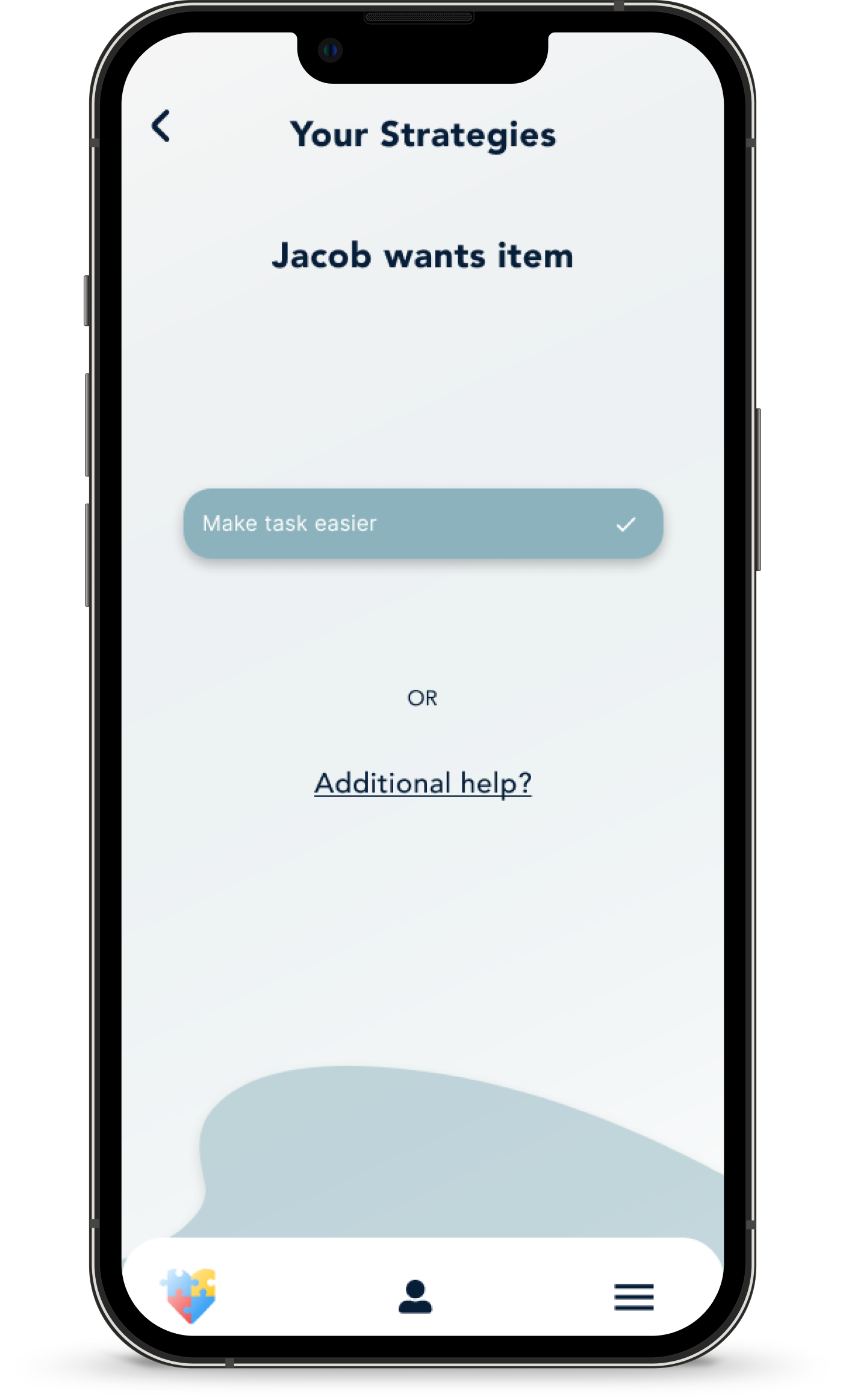
Building an application end-to-end: the ABA Parent Helper
My Role
UX/UI Designer
Figma
Miro
Google Sheets / Docs
Adobe XD
Photoshop
Tools Used
DesignLab Capstone #3
June 2022
Project
Background
All kids act out sometimes. But some children with developmental disabilities, such as Autism Spectrum Disorder, can display behaviors that make it hard for them to learn or cause harm to themselves or others.
Children diagnosed with ASD may work with therapists 1:1 to help them reach their goals together, but the majority of the time, the work of managing behavioral outbursts falls on the parents.
Problem
Though many children are prescribed therapy 1:1 with a professional behaviorist several times a week, often in the form of Applied Behavioral Analysis therapy, parents need to be able to support their children and manage their behavior outbursts in moments of crisis, independently. Without an adequate or formal support system, this is incredibly challenging.
Research
My main research objective was: to determine if some parents of neurodivergent children are in need of additional assistance while their child is not with a therapist, and what type of support would be preferred if their therapist is unavailable.
I also wanted insight into:
common barriers to clear parent-therapist communication and how much potentially takes place outside of standard working hours
what are some popular healthcare apps amongst this population, and what makes them successful with users?
It was important to discover how people use apps to attend to their health or mental health needs, so I could best design the solution
The Goal
As the intersection of healthcare and technology has become more prevalent than ever in our society, how might we create a digital solution that provides quick information for reference to these families when their therapy team is unavailable?
My Scope and Timeline
The scope of this project was to design a high-fidelity mockup for an original mobile app, with all key user flows for the main functions of the app. This project was completed as part of DesignLab’s course curriculum within a 4 week timeline. I chose the industry and general audience for the product.
Subject Matter Expert Interviews
User Interviews
Competitive Analysis
Notable Quote:
“I think our newer parents probably don't have or don't feel equipped. Someone who's been with us (agency) forever, you know, maybe doesn't need as much coaching through that.”
Anya (SME)
What are some pain points for therapists in this industry surrounding their relationships with parents? How can the deficit in parental knowledge and skill be addressed?
I remotely interviewed several families with children on the ASD about their personal experiences with early intervention ABA therapy.
Notable Quote:
There do not appear to be any direct competitors in this space, however, there are a wide array of ABA apps that facilitate the learning of new skills. I analyzed several popular mental health applications for adults and took the same principles to inform the design for this original application.
“…because we're not carrying a binder, or we can't remember all that behavior intervention.”
Nadine (Mother of twin boys on the autism spectrum)
Analyze
Empathy Map
Storyboard
Insights
I also created an empathy map to outline common pain points to help reveal the implicit needs of this group of potential users.
All parents interviewed shared feelings of frustration and exhaustion when faced with managing constant behavioral outbursts. Families were often out in public and forced to de-escalate the situation in environments they often could not control, with bystanders.
Parents contact their therapist (or case manager directly) when they have questions about their child’s treatment and sometimes in the middle of a behavioral outburst, seeking assistance.
Parents who have less experience with therapy services tend to feel less equipped to manage their child’s behavior independently. This does reduce with time and experience.
After interviewing both the SME and parents, I felt a storyboard was the most effective medium for this project to show the importance of the context of use for the design: the information stored in the app must be accessible and efficiently delivered in the moment to be useful to the target user. This visualizes the planned experience of using the ABA parent helper app in times of crisis.
Personas
The Supermom
Weekend Warriors
The majority of parents who participated had years of experience in the world of therapy and were actively involved in their children’s treatment plan and execution, often researching independently new strategies. Linda embodies many of their characteristics and was used to represent the needs of the Supermom parent.
Parents with neurodivergent children come from all walks of life, and for those that come from families with parents who both work full time, the therapy must work for their lifestyle. Parents interviewed with this background depend on the childcare services that therapy centers provide and spend less time reviewing the treatment plan, instead focus on simply following through with the prescribed recommendations. The Murdocks helped to visualize the needs of this population.
Information Architecture
After reviewing the insights from my user interviews and SME, I decided to add in additional screens for options to: record a child's behavior in the moment to show the therapist later (and a data log screen) as well as in-app resources (such the child’s as favorite videos or pictures) that the parent can store in the app to show while attempting to de-escalate a situation.
Moodboard
As the context of use was a driving factor for the interface design, I chose a cool tone blue color palette over other more energetic colors and was inspired by other mental health and learning applications that feature a minimalist UI and line drawn illustrations.
During the onboarding process, users will be able to create individualized behavior plans for their child’s needs that will save and be accessible in a crisis moment, without having to reach out to their therapist directly.
Initial Sketches
The initial sketches for this design featured a large “panic button” on the Homepage - meant for quick access to the main user flow: providing behavior support. After analyzing the research results and comparing this potential user experience to others that exist currently in the mental health space, a high degree of customization would also be necessary to include during the Onboarding process.
Mid Fidelity Wireframes
Moving from low to mid-fidelity, elements that became refined after peer and mentor feedback included:
Context of use: as the most common use case scenario for the parent helper app would be in a crisis situation, I added prompts to walk the user through a strategy he/she can employ to respond to their child’s behavior in the moment.
UI Design: High Fidelity Solution
Keeping the tone and user experience overall approachable and familiar, the high-fidelity screens were taken into usability testing with several families, who provided feedback on both the usability and interface elements.
Using cards to consolidate the customization options for parents to choose from (i.e. types of behaviors and types of strategies)
Adding a text box for users to add in completely original and unique information pertaining to their child.
the Behavior Strategy screen was adjusted to be as simple as possible, to avoid overwhelming the user as he/she is prompted to select an intervention for their child while trying to de-escalate the behavioral outburst, or prevent one from happening in the first place.
First-time users: SOS Flow
After registration
Designed to provide quick support to parents picking up the app and do not have access to the child’s prescribed behavior plan or therapist guidance
Prompts include common reasons for the selected behavior and commonly prescribed strategies
The recommended flow begins after the user selects the primary “Create a Behavior Plan” CTA, but may not be appropriate given the first-time use case if a child is in crisis
Additional Screens
Design
Usability Testing and Next Steps
Language; move away from ABA jargon and use more common terms. Since target users are parents new to this type of treatment they may not understand. (for example, change: Stimuli -> Calming Folder)
Onboarding; it was suggested by both the SME and testers that users would be better set up for success if their provider was present during the onboarding process.
Potentially create different sets of user responses for different environments (i.e. school, home, etc.) as interventions may be different or not applicable from one to another
















